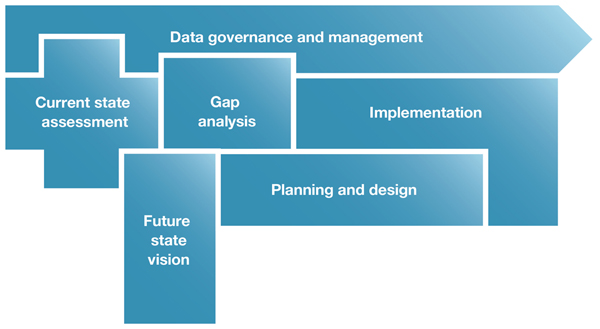We've created a learning resource that covers six core phases to help you build interoperability in your agency.
Information in the six phases will help you:
- learn about typical activities to resolve four common interoperability hurdles outlined in the interoperability scenarios
- understand how to approach interoperability projects including who needs to be involved and learn about common interoperability technologies
- understand the importance and role of governance and management
- plan your own interoperability projects with the available skills and resources, for example, with limited resources you can make a start with data governance activities and conduct a gap analysis based on your current and future state
The development phases do not:
- replace your agency's project management methodology
- provide step-by-step instructions (in an agile environment you can use them with other actions, omit them or operate them in parallel)
Development phases overview
Data governance and management ensures your data is standardised and managed to ensure its quality and discoverability. It supports building interoperability across business, security, legal, semantic and technical themes.
Current state assessment establishes a strong understanding of your agency's business, information and data management environment.
Future state vision builds a vision of an improved future state and the requirements for creating new services and systems.
Gap analysis analyses and quantifies gaps between the current and improved future state. It forms the basis of requirements.
Planning and design plans how your revised business, information and data management environment will operate once the future state is implemented.
Implementation builds your agency's new interoperable state into its business using common tools and solutions. It also reminds you to monitor new processes for ongoing improvements.


